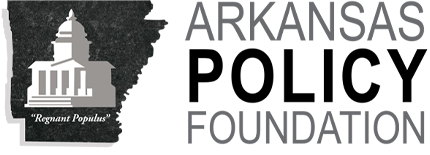Summary: Arkansas Medicaid spending is fiscally unsustainable. Medicaid’s unfunded liabilities must be identified. Strict program limits must be imposed.
(December 2014) Medicaid expansion has proven a contentious issue for Arkansas policymakers, with Republicans divided over a signature Democratic issue. One group supported expansion; the other backs repeal. Expansion opponents have significant leverage in the state Senate. They are waiting on Gov.-Elect Asa Hutchinson, expected to announce a plan next month.1 Other states’ Medicaid policies are part of a review process.2
Opponents should use their power to repeal the expansion that occurred in 2013-14, and insist proponents identify any Medicaid unfunded liabilities. Proponents should not be given the benefit of the doubt. They’ve refused to identify unfunded liabilities for eight years,3 and fail to comprehend their importance to Arkansas’ fiscal position.
Background
Medicaid covers “acute and long-term care for low-income families with dependent children, elderly people, people with disabilities, and, at states’ option starting in January 2014, all nonelderly adults with family income up to 138 percent” of the federal poverty level, the CBO notes. It is administered and financed by the U.S. and state governments. Spending has risen more than 6% annually over the past 20 years4, more than CPI’s medical component. Arkansas proponents concede it is “unsustainable.”5
Identify Unfunded Liabilities
Unfunded liabilities could undermine future legislatures’ ability to fund constitutionally-required programs such as education and corrections. Liabilities should already have been estimated using Medicaid enrollment, cost, and U.S. reimbursement data.6 State Sen. Cecile Bledsoe, R-Rogers, raised the issue in April. She chairs the Senate Committee on Public Health, Welfare and Labor, which oversees Medicaid. Seventeen legislators cited the Policy Foundation in seeking a liabilities estimate in September.
Spending Cap
Every state Medicaid program is changing.7 New York imposed a spending cap consistent with growth “no greater than the ten-year average rate for the long-term medical component of the CPI (currently estimated at 3.8%).8 The cap includes a provision to bring spending in line with services.
Enrollment Limits and Eligibility
Limits are also possible. A cap “allows a state to establish a certain number of eligibility slots.” As participants leave, new enrollees take their place. A freeze prevents new applicants from enrolling after a specified data.9 There are precedents. Arizona imposed a cap. Five states froze their CHIP enrollment.10 Illinois used an independent audit and removed 234,000 individuals from its Medicaid rolls.11 Arkansas should propose waivers12 to HHS to reduce enrollment. Legislators can amend appropriations, including requirements that able-bodied men and women enroll in job training programs, test for substance abuse or visit Arkansas county health units.13
Other Questions Legislators14 Should Ask
Arkansas hospitals and other providers aggressively support Medicaid expansion. Do metrics support every claim they are cash-strapped without expansion? Has charity care increased or decreased as a percentage of expenses at Arkansas hospitals? Has medical bad debt increased or decreased as a percentage of expenses among Arkansas patients ineligible for Medicaid? Are Arkansas emergency room visits greater than the U.S. average? If so, are best practices being used to reduce costs to hospitals?
No re-expansion should occur after repeal until liabilities are identified, caps and limits are imposed, and relevant questions are answered.
1 “Gov.-elect Hutchinson names transition team, talks ‘Private Option.’ The City Wire, November 6, 2014
2 Policy Foundation interviews with current and former legislators.
3 The Policy Foundation called for a Medicaid unfunded liabilities estimate in mid-2006,.
4 Congressional Budget Office, “Impose Caps on Federal Spending for Medicaid,” Nov. 13, 2013
5 Arkansas’ current growth rate per recipient is about 4% per capita with a 2% goal. “Dr. Andy Allison, Arkansas,” Alabama Medicaid Agency. Allison was Arkansas Medicaid director. A “per capita cap” would limit each state to a fixed dollar amount per beneficiary
6 The Policy Foundation used similar data to estimate $3.5 billion in unfunded liabilities for ARKids First, a major Arkansas Medicaid component, in 2012.
7 http://www.medicaid.gov/Medicaid-CHIP-Program-Information/By-State/By-State.html
8 http://www.health.ny.gov/health_care/medicaid/regulations/global_cap/
9 Pernice, Cynthia and David Bergman, “State Experience with Enrollment Caps in Separate SCHIP Programs.” National Academy for State Health Policy, February 2004
10 Alabama, Colorado, Florida, Montana and Utah. http://www.pewtrusts.org/en/research-and-analysis/blogs/stateline/2003/11/04/five-states-freeze-chip-enrollment
11 Illinois Department of Human Services report to Governor Quinn on the Illinois Medicaid Redetermination Project, April 30, 2014
12 Waivers are vehicles states can use to test new or existing ways to deliver and pay for health care services in Medicaid and CHIP. A waiver list is available at: http://www.medicaid.gov/Medicaid-CHIP-Program-Information/By-Topics/Waivers/Waivers.html
13 Arkansas counties have local health units.
14 Arkansas legislators have other tools: memorials and resolutions to Congress. These include repeal of the medical device tax; repeal of the individual mandate; repeal of the coverage mandate; and repeal of the federal bailout for insurers on the exchanges.









